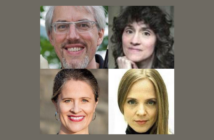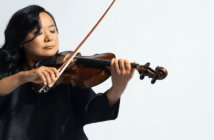This page is also available in / Cette page est également disponible en:
Français (French)
|
Toronto, October 17, 2018 – The Ontario Arts Council (OAC) has released The status of women in the Canadian arts and cultural industries: Research review 2010–18, a report commissioned from a research team led by Dr. Amanda Coles, a Canadian on faculty at Australia’s Deakin University. This report provides an important synthesis of existing research on the status of women in the arts in Ontario and Canada.The majority of existing research focuses on specific sectors (such as media arts/screen, theatre, etc.), rather than addressing the arts and cultural industries as a whole. The report covers six sectors: visual arts, dance, theatre, literature, music and media arts/screen. Key findings from the report Earnings and income
Education and training
Leadership
Career and industry recognition
Workforce and employment patterns Overall, the arts and cultural industries workforce in Ontario is gender-equal. Fifty-two percent of Ontario artists, and fifty-one per cent of cultural workers in Ontario, are female. However, the gender distribution within nine key arts occupational groups varies considerably:
Literature review identified gap The review identified a lack of existing research that examined how gender inequality may be compounded when combined with other factors of discrimination such as racialization, age, sexual orientation, disability, etc. In addition, the existing research largely frames gender as binary (i.e. in terms of male and female only). These gaps in the existing research meant that the report was unable to address the important issues of intersections and non-binary gender equality. Quotes “I am pleased that the Ontario Arts Council is able to contribute to our overall understanding of the status of women in the arts. This is not a new issue. However, there is a renewed interest in the subject, at times as part of larger discussions about equity. We will build on this work by asking individual applicants a broader range of demographic questions, including gender, beginning in 2019–20, through a voluntary self-identification approach,” said Rita Davies, Chair of the Ontario Arts Council. “OAC’s report will complement other upcoming initiatives that will add to our collective knowledge in this area. For example, there is the pending report of the Standing Committee on Canadian Heritage’s review of Gender Parity on the Boards and Senior Leadership Levels of Canadian Artistic and Cultural Organizations,” said Peter Caldwell, OAC Director & CEO. “We look forward to exploring with our arts and funder colleagues how to help the arts community gather better data on their workforce.” Background This report includes a cross-sectoral analysis, identifying the common themes that emerge from a review of the sector-specific research studies – and noting differences across the sectors. It focuses on key quantitative indicators that illuminate the professional experiences of women artists and cultural workers in Ontario specifically and in Canada more broadly. Data was sourced from published literature, with an emphasis on scholarly research and high-quality industry reports. Secondary sources, including mainstream media sources and industry advocacy material, were used when credible and appropriate, to fill in knowledge gaps. About Dr. Amanda Coles Amanda Coles is a Canadian scholar who holds a PhD in Comparative Public Policy from McMaster University. She is a lecturer in the Masters of Arts and Cultural Management in the Faculty of Business and Law program at Deakin University (Australia), a Co-Researcher with the Interuniversity Research Centre on Globalization and Work (CRIMT) in Montreal, Canada, and an Affiliate Researcher with the Centre for People, Organisation and Work (CPOW) at RMIT University (Australia). |
This page is also available in / Cette page est également disponible en:
Français (French)














